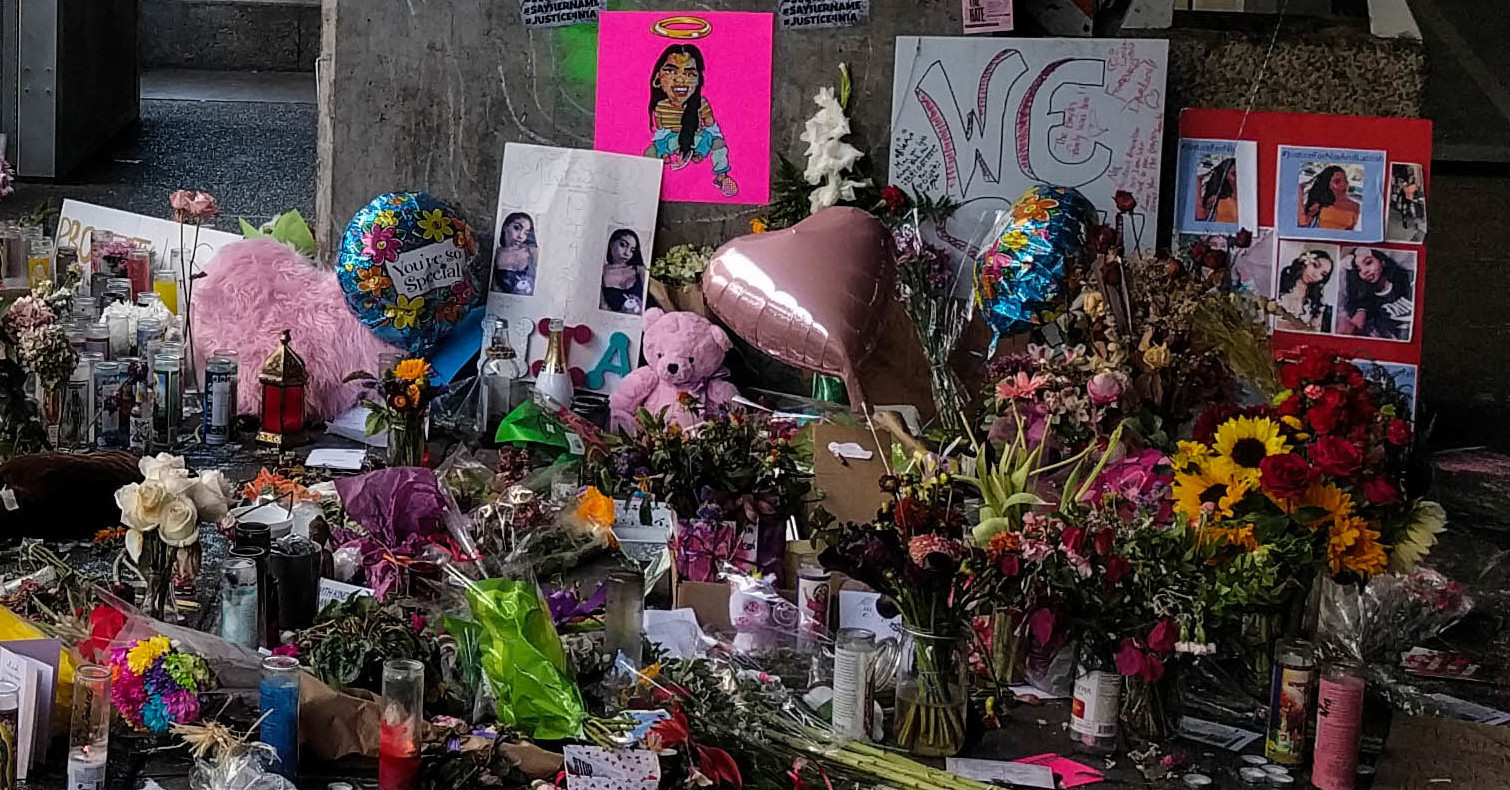Days after Nia Wilson, age 18, was murdered at the MacArthur BART stop in Oakland, protesters marched to the offices of KTVU, the Bay Area’s local FOX affiliate. The group sought retribution for an editorial decision made in KVTU’s coverage: in a segment that aired a day after Wilson’s death, an image pulled from her Facebook account showed her holding what appeared to be—but likely wasn’t—a gun. “I immediately felt there was something wrong,” Richard Koci Hernandez, a longtime Oakland resident and an associate professor at UC Berkeley’s School of Journalism, says of the report. “But it’s not a new phenomenon, if you’re paying attention to images.”
KTVU quickly apologized for its photo choice and used different images of Wilson, who was black, in subsequent stories. The news media frequently treats its subjects differently according to race: a recent examination by the Joint Center, a health policy institute, found that articles published between 2015 and 2016 disproportionately portrayed black families as living in poverty and being involved in crime. These representations have real-life consequences—among them, according to the Journal of Social Issues, the potential to “significantly sway attitudes” towards violent-crime victims who are racial or ethnic minorities. At KTVU, the process that put the objectionable picture before viewers remains unclear. (The station did not respond to requests for comment.)
ICYMI: A TV station neglected to update an old story on the web. That ended up having big consequences
Previously, for coverage of a murder like Wilson’s, the photos available to broadcasters might have been limited to mugshots provided by law enforcement or candid photos provided by the victim’s family. Photo curation happened outside of the newsroom. Now, however, many newsrooms—staffed by an already-taxed workforce, constrained by budget cuts, driven to be first—do the curatorial work themselves. “We’re drowning in imagery, social media posts, information, and data—all of the elements that go into good reporting,” Hernandez, who was a photographer for the San Jose Mercury News in the ’90s and ’00s, says. “But we have less people in newsrooms to check and double-check, and get what we used to call ‘final eyes’ on something.”
Take a look at the larger picture of what the person is posting. Not just photos, but texts. Are they sharing GIFs or memes? Look at their history of weeks, months.
A few companies aim to help. Storyful, based in Dublin, captures and contextualizes social media footprints—videos, posts, tweets, snapchats, LinkedIn accounts—from people mentioned in breaking news. In the case of a heavily-publicized violent act, preserving social media footprints can be a race against time. For an individual accused of violent deeds, Facebook often “takes the person’s page down as soon as they identify them,” Meghan Holmgren, a senior news editor at Storyful, says. “We’re working against the clock to create a capsule of that person’s profile.” For a violent-crime victim, Facebook changes their original profile page into a “memorial” one, which can alter the content on it; Storyful wants to reach such pages before any changes are made. Once that capsule is complete, news organizations contact Storyful to authenticate photos and videos they’ve obtained on their own, gather more material, and solicit advice on how to use it.
This effort is intended to provide newsrooms with images that are truly representative of the people in their stories. “Take a look at the larger picture of what the person is posting,” Holmgren advises. “Not just photos, but texts. Are they sharing GIFs or memes? Look at their history of weeks, months.” Asked about the photo that KTVU used to portray Wilson, Holmgren says, “It would not have been in my guidance to say, ‘Let’s have this represent her.’”
Sometimes it’s best to keep images simple. “The obvious thing is to just find a headshot,” Hernandez says. “We want to see the person’s face. We want to look into the eyes of whoever we’re talking about, and so you need a clean, straightforward image.” Hernandez also suggests scrutinizing facial expressions. What might an audience assume from a smile, or a scowl? Is there another photo with a more neutral expression?
The ubiquity of social media means local broadcasters don’t get second chances, and their segments are no longer exclusively “local.” Subsequent broadcasts may use different photos of Nia Wilson, but social media can spread the first broadcast and its leading image globally, and help it to last forever. “It used to be, you run a story and have three angry people call the station,” North says. “But now, things are immediately bigger and faster because of social media.”
ICYMI: Newspaper staffer resigns, says publisher called story “racist against white people”
Rick Paulas is a writer from Chicago, now based in Oakland, whose work can be found at rickpaulas.com.

